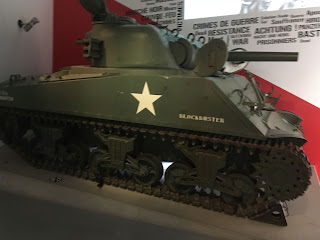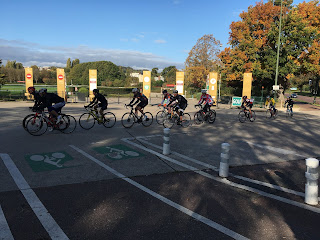Kristaps Andrejsons, host of the The Eastern Border podcast.
On the third weekend of my trip, I drove from Vilnius,
Lithuania, to Ludza, Latvia, to visit Kristaps Andrejsons, the host of The Eastern Border podcast.
Ludza is Kristaps’ hometown and the easternmost city in
Latvia, hence the name of the podcast.
The first thing we did was a small tour of the two big churches in the
town—the Orthodox Church in the center of Ludza, and the Catholic Church on the
hill above the big lake to the east of town. The Catholic Church shares the
hilltop with a ruined medieval castle.
We took in the view of the lake, then went back to the car and drove
southeast to Zilupe.




The Catholic Church on the hill and the Orthodox Church in the center of Ludza.
Kristaps said Zilupe is the easternmost village in the European Union. When I repeated this on Facebook, a well-traveled friend, Jim Trumm pointed out that Reunion Island in the Indian Ocean is part of the EU, and the place where the first Euro was officially used as legal tender. But if we stay in Europe and the Northern Hemisphere Kristaps is correct.
After a brief look at the dark border area of Terehova east
of Zilupe, we went back to Ludza and said goodbye. Then I drove to Valga,
Estonia, for dinner, completing my three meals in three countries plan for the
day.
Kristaps started the The Eastern Border with the same
motivation I have heard from other creative, motivated people: he was pissed
off. He heard a “so-called expert on Russia and Eastern Europe on CNN, who
didn’t know shit (pardon my French) about Russia or Eastern Europe. …. It turns
out she had been in Russia just a year, mostly in Moscow and St. Petersburg.”
Four years ago, Kristaps recorded the first episode in July
of 2015. He discussed the economy of the Soviet Union. Three weeks later was
Soviet Culture, the Brezhnev, then the War in Afghanistan. Chernobyl was the
following March. Most episodes are on Soviet
or on games. Then in 2017 he added news from his side of the border. Over time, he has added more news, Latvia
101, and still covers all things Soviet.
Kristaps is animated and engaging and has a dry wit, so the
podcasts are funny as well as informative.
He travels to the US occasionally. Last month he was in Boston and
NYC. He has also been to Fort Worth,
Santa Monica and Seattle. The five
states he has been to represent at least a third of the population of America,
both coasts, and the gap between Fort Worth and Santa Monica covers most of the
range of American politics.
As with the Jewish Story, whose host I also visited on this trip, I am listening alternately to current and early episodes. I found out
about both podcasts after more than 50 episodes were recorded, so I have a lot
of catching up to do.
If you have an interest in Soviet Culture and if you want to
hear how democracy is dying under Putin in the Russian Federation, The Eastern
Border podcast is well worth listening to.



















































